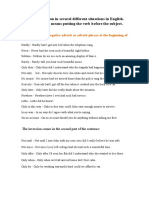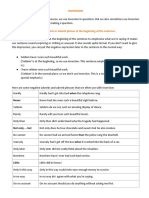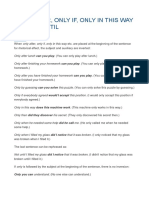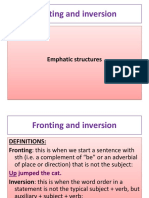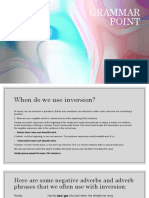0% found this document useful (0 votes)
2 views2 pagesUsing Inversion
Inversion is a grammatical structure that reverses the normal word order in a sentence, often for emphasis, dramatic effect, or formality. It involves placing auxiliary verbs before the subject, especially after negative adverbials or in conditional sentences. Examples illustrate its use for emphasis, drama, and formal contexts.
Uploaded by
sanacaroline616Copyright
© © All Rights Reserved
We take content rights seriously. If you suspect this is your content, claim it here.
Available Formats
Download as PDF, TXT or read online on Scribd
0% found this document useful (0 votes)
2 views2 pagesUsing Inversion
Inversion is a grammatical structure that reverses the normal word order in a sentence, often for emphasis, dramatic effect, or formality. It involves placing auxiliary verbs before the subject, especially after negative adverbials or in conditional sentences. Examples illustrate its use for emphasis, drama, and formal contexts.
Uploaded by
sanacaroline616Copyright
© © All Rights Reserved
We take content rights seriously. If you suspect this is your content, claim it here.
Available Formats
Download as PDF, TXT or read online on Scribd
/ 2













